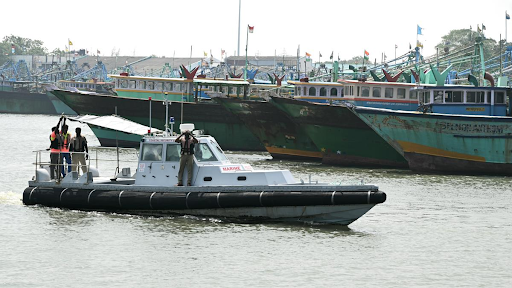




Source: INDIANEXPRESS
Disclaimer: Copyright infringement not intended.
The gruesome Pahalgam terror attack on April 24 2025 which claimed the lives of 26 tourists near the Baisaran meadow in Jammu & Kashmir has once again exposed the vulnerabilities in India’s counter-infiltration architecture.
The attackers believed to have crossed over from Pakistan fled into the dense Pir Panjal forests triggering a prolonged and risky manhunt.
The incident highlights a hard truth: preventing infiltration is more effective than post-infiltration counter-terror operations.
Baisaran located 6 km from Pahalgam is accessible only on foot or pony and surrounded by dense, steep forests.
The Pir Panjal mountain range provides ideal cover for infiltration and evasion.
Poor visibility, rough terrain and limited accessibility significantly hamper security forces' efforts to track infiltrators.
Over 50 Army personnel have lost their lives in such jungle operations in recent years.
Once a terrorist is in, it is not easy to hunt him down… So the idea should be to not let him enter in the first place.
A proactive security approach includes
Robust physical fencing along the Line of Control.
Intelligence-led operations to anticipate and prevent infiltration attempts.
Trained border personnel to monitor and patrol critical areas.
Total Length of border: 3,300+ km
J&K segment: ~1,000 km
Almost entirely fenced; however gaps remain in riverine and snow-prone areas.
Border Fence Impact
|
Year |
Infiltration Attempts |
Successful Infiltrations |
|
2002 |
350+ |
~180 |
|
2010 |
247 |
52 |
|
2024 |
~70 estimated |
~60% foreign terrorists |
Features
Thermal imagers, fibre-optic sensors, radars.
Infrared alarms, sonar systems for rivers.
Aerostats and unattended ground sensors.
Centralised command-and-control systems.
Incomplete implementation: Deadline extended from 2018 to 2025.
Tech procurement delays and unrealistic proposals e.g., motorized pulleys.
Limited power supply in border areas affects performance of devices.
|
Challenge |
Impact |
|
Heavy snowfall (15 ft) |
Damages a third of border fence annually |
|
Tough terrain |
Slows repair and material transport |
|
Extreme cold/fog/rain |
Hampers vigilance and night patrolling |
|
Power scarcity |
Disrupts night-vision and surveillance gear |
Physical Measures
Develop weather-resilient smart fences.
Ensure all-weather roads and helipads for rapid reinforcement and supply.
Technological Investments
Smart sensors that alert when fences are breached.
Drone-based and aerial surveillance, especially for forested and riverine zones.
Tunnel detection systems and heat signature trackers.
Human Resource
Boost manpower rotation to prevent fatigue.
Recruit specialised mountain warfare units for jungle terrains.
Establish local intelligence networks and community partnerships.
Sources:
|
PRACTICE QUESTION Q.“Preventing infiltration is more effective than post-infiltration counter-terror operations.” In the light of the recent Pahalgam attack, critically examine India’s challenges in preventing cross-border infiltration and suggest a comprehensive strategy to strengthen its border management system. (250 words) |





© 2025 iasgyan. All right reserved